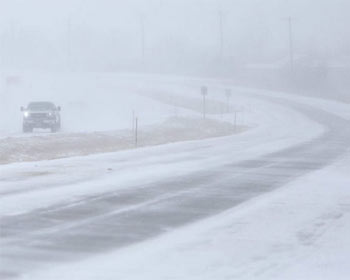MPC Research Reports
Report Details
Abstract
 Driving risk could increase as roadway conditions become more hazardous because of adverse weather conditions. This could lead to an increase in crash frequencies. About 24 percent of all reported motor vehicle crashes in the United States are related to weather conditions. Adverse winter weather may affect driver behavior because of the hazardous driving conditions it can create. These hazardous conditions force individual drivers to react accordingly by modifying their individual headway and speed. Every driver chooses their individual speed according to their own perception of the weather severity, which may lead to higher speed variations, which in turn have resulted in increases in crash frequencies. Therefore, better understanding of the impacts of adverse weather conditions may be helpful in reducing crashes and improving safety. The objectives of this study were to address the relationship and impacts of adverse weather conditions on speed selection behavior. In addition, we examined how the change in speed behavior during a winter storm will affect microscopic behavior with resulting impacts on headways and spacing. The data collected along different corridors of I-80 in Wyoming during winter storms were used for the analysis.
Driving risk could increase as roadway conditions become more hazardous because of adverse weather conditions. This could lead to an increase in crash frequencies. About 24 percent of all reported motor vehicle crashes in the United States are related to weather conditions. Adverse winter weather may affect driver behavior because of the hazardous driving conditions it can create. These hazardous conditions force individual drivers to react accordingly by modifying their individual headway and speed. Every driver chooses their individual speed according to their own perception of the weather severity, which may lead to higher speed variations, which in turn have resulted in increases in crash frequencies. Therefore, better understanding of the impacts of adverse weather conditions may be helpful in reducing crashes and improving safety. The objectives of this study were to address the relationship and impacts of adverse weather conditions on speed selection behavior. In addition, we examined how the change in speed behavior during a winter storm will affect microscopic behavior with resulting impacts on headways and spacing. The data collected along different corridors of I-80 in Wyoming during winter storms were used for the analysis.
How to Cite
Thapa, Sandeep, and Rhonda Young. Speed Selection During Winter Road Conditions, MPC-19-394. North Dakota State University - Upper Great Plains Transportation Institute, Fargo: Mountain-Plains Consortium, 2019.

